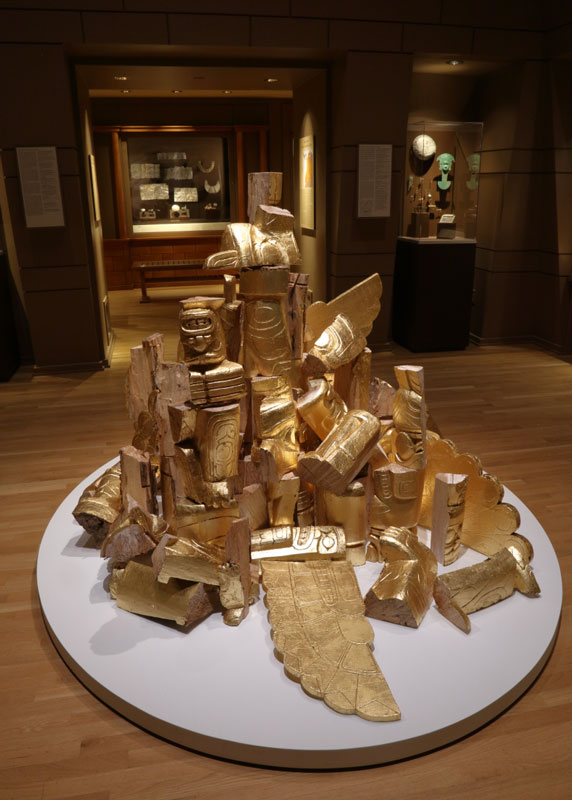Nicholas Galanin
I Think It Goes Like This (Gold)
April 9, 2024 - April 5, 2026


For Indigenous peoples of the Pacific Northwest coast such as Galanin (Tlingít and Unangax̂), the totem pole is a ceremonial object used to celebrate events, depict stories, and document family lineage. In I Think It Goes Like This (Gold), a seemingly Indigenous-made totem pole is covered in gold leaf but lies dismantled on the ground. Contrary to the viewers' original understanding of the object, this is not a cultural tool of memory-making and community. It is a carving by an Indonesian artist created to sell as a souvenir to tourists in Alaska. Through his intervention of destruction and reassembly to the original carving and application of gold leaf, Galanin creates dialogue about the economy of cultural appropriation while reclaiming the work as Indigenous art.
About the artist
Examining the complexities of contemporary Indigenous identity, culture, and representation, Nicholas Galanin works from his experience as a Tlingít and Unangax̂ artist. Embedding incisive observation and reflection into his oftentimes provocative work, he aims to redress the widespread misappropriation of Indigenous visual culture, the impact of colonialism, as well as collective amnesia. Galanin reclaims narrative and creative agency, while demonstrating contemporary Indigenous art as a continually evolving practice. As he describes: “My process of creation is a constant pursuit of freedom and vision for the present and future. I use my work to explore adaptation, resilience, survival, dream, memory, cultural resurgence, and connection and disconnection to the land.” Galanin unites both traditional and contemporary practices, creating a synthesis of elements in order to navigate “the politics of cultural representation.” Speaking through multiple visual, sonic, and tactile languages, his concepts determine his processes, which include sculpture, installation, photography, video, performance, and textile-based work. This contemporary practice builds upon an Indigenous artistic continuum while celebrating the culture and its people; Galanin contributes urgent criticality and vision through resonant and layered works.




